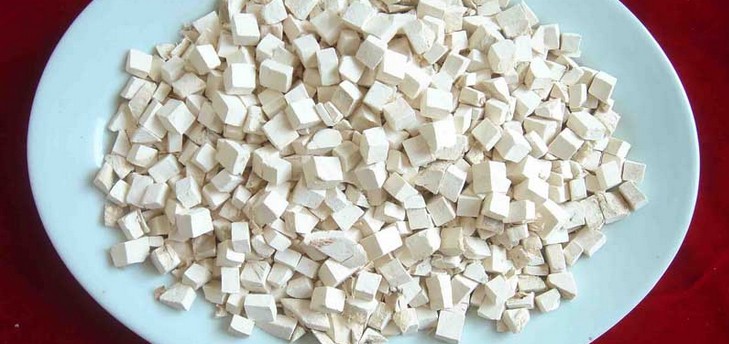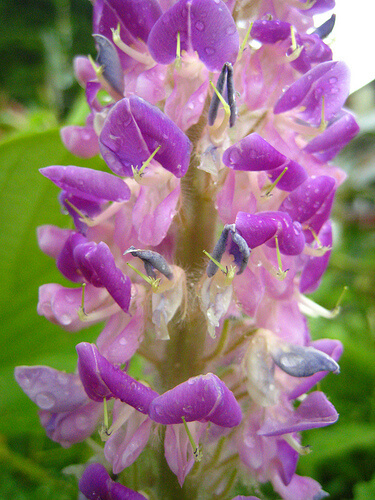Kudzu have been used in traditional Chinese medicine for centu
Kudzu (Pueraria lobata) is a climbing vine that belongs to the pea family. Its flowers and starchy white roots have been used in traditional Chinese medicine for centuries.

Uses for Kudzu
1.In alternative medicine, kudzu is typically used for the following conditions:
2.alcoholism
3.menopausal symptoms
4.diabetes common
5.cold
6.fever

Health Benefits of Kudzu
Kudzu contains isoflavones, estrogen-like compounds thought to offer various health benefits.
So far, scientific support for the benefits of kudzu is limited.
1) Postmenopausal Women For a study published in 2003, researchers assigned 127 postmenopausal women (aged 50 to 65 years) to receive hormone replacement therapy, kudzu supplements (delivering 100 mg of isoflavone daily), or no treatment for three months. While only participants in the HRT group had a reduction in cholesterol levels, HRT- and kudzu-receiving study members both showed improvements in cognitive function and attention span. A more recent study, published in 2007, found taking kudzu extract in capsule form daily for 24 weeks helped alleviate vaginal dryness in postmenopausal women.
2) Alcohol Intake Kudzu extract may be helpful in reducing alcohol intake, according to a 2005 study. Using a real-life setting (an apartment with a television, reclining chair, and refrigerator stocked with beer), researchers performed an experiment involving heavy drinkers. They found that those who took kudzu capsules for seven days prior to the experiment drank an average of 1.8 beers in 90 minutes (compared to the average of 3.5 beers consumed by those who took a placebo prior to the study). Learn more about the use of kudzu in reduction of alcohol intake.
3) Cluster Headache In a 2009 study of 16 people who had reported using kudzu to treat cluster headache, researchers determined that kudzu may help decrease the frequency, duration, and intensity of attacks, with minimal side effects.
4) Metabolic Syndrome Animal research published in 2009 indicates that kudzu may help manage metabolic syndrome, a condition marked by a cluster of health problems (including excess belly fat, high blood pressure, high cholesterol, and insulin resistance) that are known to raise your risk of heart disease and type 2 diabetes. For the study, a group of female rats with metabolic syndrome was fed a diet supplemented with kudzu extract. After two months, the kudzu-fed rats had gained less weight than rats that weren't fed kudzu. Rats in the kudzu group also had healthier levels of blood pressure, insulin, and cholesterol than their study counterparts. 
Caveats
Individuals with breast cancer as well as anyone using diabetes medications should avoid kudzu. Supplements haven't been tested for safety and due to the fact that dietary supplements are largely unregulated, the content of some products may differ from what is specified on the product label. Also keep in mind that the safety of supplements in pregnant women, nursing mothers, children, and those with medical conditions or who are taking medications has not been established. You can get tips on using supplements here, but if you're considering the use of kudzu, talk with your primary care provider first. Self-treating a condition and avoiding or delaying standard care may have serious consequences.
Sources
Manonai J, Chittacharoen A, Theppisai U, Theppisai H. "Effect of Pueraria mirifica on vaginal health." Menopause. 2007 14(5):919-24.
Peng N, Prasain JK, Dai Y, Moore R, Arabshahi A, Barnes S, Carlson S, Wyss JM. "Chronic dietary kudzu isoflavones improve components of metabolic syndrome in stroke-prone spontaneously hypertensive rats." J Agric Food Chem. 2009 26;57(16):7268-73.
Sewell RA. "Response of cluster headache to kudzu." Headache. 2009 49(1):98-105.
Woo J, Lau E, Ho SC, Cheng F, Chan C, Chan AS, Haines CJ, Chan TY, Li M, Sham A. "Comparison of Pueraria lobata with hormone replacement therapy in treating the adverse health consequences of menopause." Menopause. 2003 10(4):352-61.


 Healthier Future
Healthier Future